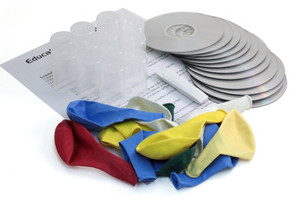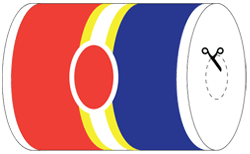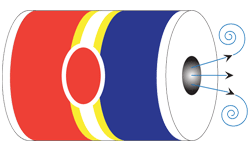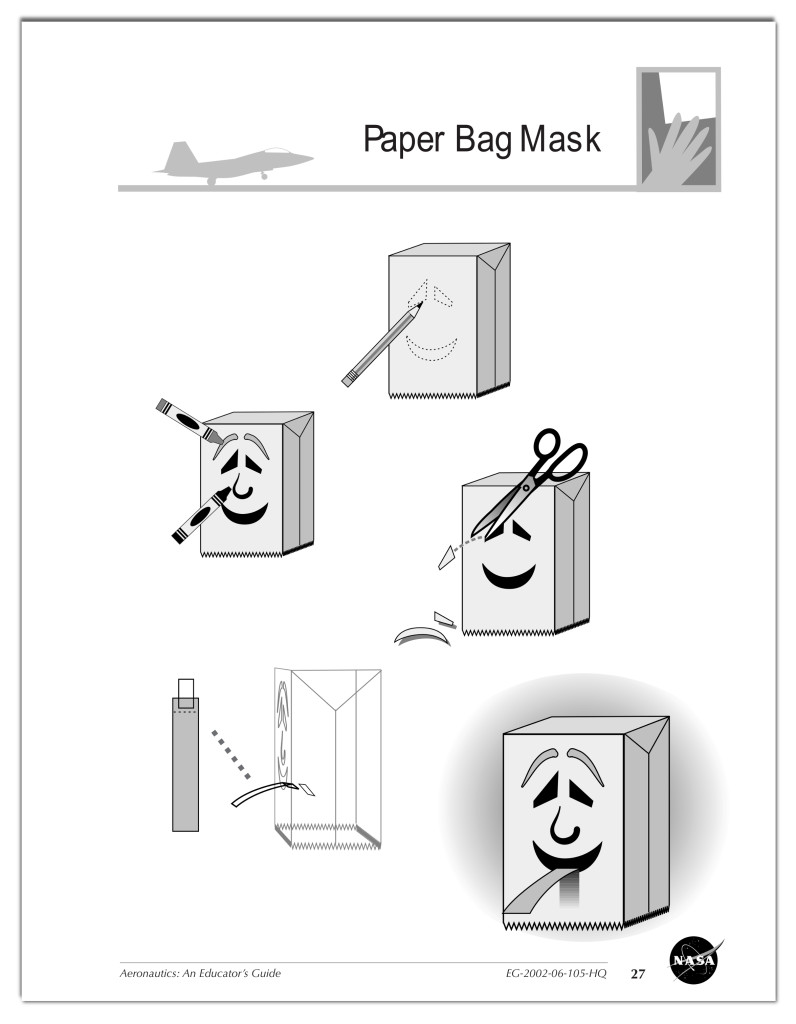 The sky (and beyond) is the limit if you’re looking to start a class discussion on air pressure! Practically anything goes—from balloons to spacesuits, smoke rings to clouds in a bottle.
The sky (and beyond) is the limit if you’re looking to start a class discussion on air pressure! Practically anything goes—from balloons to spacesuits, smoke rings to clouds in a bottle.
We hope you have as much fun using these air pressure discussion starters as we’ve had gathering them.
Things that Don’t Suck
For many students, one of the most quizzical things related to air pressure is the idea that air pressure—not suction—is responsible for things sticking together. We don’t realize how strong air pressure is. Just standing around, we are being affected by air pressure. There are about 15 pounds of pressure pushing on every square inch of our bodies.
The National Science Foundation, together with the University of California, have prepared a wonderful website with five different answers to the question, Why are we not crushed by atmospheric pressure?
We’re pretty sure your students will love this site. Haven’t we all wondered what would happen to our bodies if we were set adrift in outer space with no protective spacesuit to keep out the extraterrestrial atmosphere? Or what if we plunged down to the bottom of the sea without a diving bell? Those answers—and more—are here.
Step Outside of Earth’s Gravity
Space exploration wouldn’t be possible if scientists didn’t create safe environments that mimic the air pressure on Earth. Every manned rocket that travels through our solar system is built to accommodate the human body’s limits related to air pressure. And that includes space suits.
NASA has an excellent explanation of how its spacesuits have evolved from the 1950s until today. Use this link to start a discussion about extra-terrestrial air pressure.
Atmospheric Pressure Activities Galore
North Carolina State University has a wonderful site filled with kid-friendly experiments, activities and worksheets related to climate and atmospheric pressure.
Students can make their own weather barometer and anemometer. There are also instructions for creating a cloud in a bottle.
 Our Weather Science kit will help your students explore six basic weather phenomena.
Our Weather Science kit will help your students explore six basic weather phenomena.
They can experiment with static electricity that causes lightning, make their own clouds, build a desktop water cycle model, observe the movement of air currents, explore global warming and the greenhouse effect, and learn about the harmful impact of acid rain. To find more activities and experiments for your classroom, browse our selection of air pressure science activities.
Fun with Torroidal Vortices
Have you ever seen a smoke ring? If so, then you’ve experienced the beauty of a torroidal vortex. (By the way, are we crazy or is it nearly as much fun to say “torroidal vortex” as it is to make one?)
If you’d like to learn more about torroidal vortices—and how to demonstrate them easily in the classroom—our “Torroidal Vortex” blog is a great place to start.
Then there’s our Zero Blaster—a sure-fire smoke ring machine that launches 2- to 6-inch diameter non-toxic rotating toroidal vorices that will sail up to 14 feet across your classroom.
If you’d prefer to build your own, Physics Central offers these do-it-yourself instructions.
Look Mom, No Wheels!
We love Science Bob! Here’s a link to his instructions for a homemade hovercraft you can ride on! (Yes, RIDE ON.) We’re not sure how many teachers would want this in their classroom, but it sure looks like fun!
 If you’d prefer a slightly less ambitious project—and certainly a more classroom-friendly one—take a look at our “Look Mom, No Wheels!” blog, which explains how to create tabletop hovercrafts from some very basic materials.
If you’d prefer a slightly less ambitious project—and certainly a more classroom-friendly one—take a look at our “Look Mom, No Wheels!” blog, which explains how to create tabletop hovercrafts from some very basic materials.
You can also order our Hovercraft Kit if you’re looking for a convenient, ready-to-go method of bringing hovercraft science into your classroom.
Check out our video here.
Why Do Your Ears Pop?
 Have you ever been on a train going through a tunnel or a plane and your ears pop? Why does this happen?
Have you ever been on a train going through a tunnel or a plane and your ears pop? Why does this happen?
The short answer: air pressure.
Your students will learn the answers on this Physics.org web page.
Make a Funny Bernoulli Face!
Check out this kid-friendly science (and craft) project. Let your students create silly paper masks that demonstrate Bernoulli’s Principle! Click here or on the image below for instructions.





